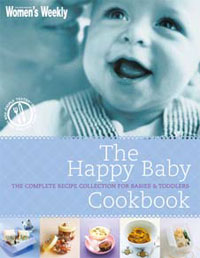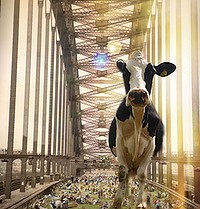Chapman wasn’t feeling particularly hysterical as he kept crapping himself while he was in Manhattan (Kansas) a couple of weeks ago and was then confirmed to be suffering from campylobacter.
.jpg) I didn’t feel hysterical with my own case of the green apple splatters over the weekend while sitting in the backseat with Sorenne, as Amy drove the five hours to Lebannon, Missouri, for a Thanksgiving dinner with her father and family. I spent the six hours we were there in the bed or bathroom, along with the five hour drive home, topped off with an, uh, uncomfortable night.
I didn’t feel hysterical with my own case of the green apple splatters over the weekend while sitting in the backseat with Sorenne, as Amy drove the five hours to Lebannon, Missouri, for a Thanksgiving dinner with her father and family. I spent the six hours we were there in the bed or bathroom, along with the five hour drive home, topped off with an, uh, uncomfortable night.
Parents of children who have died from foodborne illness, like Mason Jones of the U.K., are not hysterical. I prefer to discuss the multiple food safety failures that led to the outbreak so that others can be prevented – fewer sick people, fewer grieving parents. That’s not hysterical.
And the three people who have been stricken with E. coli O157 linked to drinking raw, unpasteurized milk from the Dungeness Valley Creamery in Washington State, reported this afternoon by the Washington State Department of Health, probably don’t feel they are being hysterical.
No E. coli has been found in samples from the dairy’s current batch of milk, but during an investigation at the dairy, WSDA found the same bacteria that caused one of the illnesses.
.jpg) That, according to would-be raw milk guru David Gumpert, would probably mean health types were being hysterical because they didn’t have better proof of causation.
That, according to would-be raw milk guru David Gumpert, would probably mean health types were being hysterical because they didn’t have better proof of causation.
While acknowledging in some sort of column-opinion piece released last week that there are tragic cases, Gumpert attempted to blow the lid off the foodborne-illness-sick-people-hype by saying the data are incomplete and then sets up the rhetorical strawperson thingy:
“So what’s behind the hysteria on foodborne illness? Clearly, part of it has to do with the dramatic cases being reported of individuals who have suffered serious long-term repercussions. … They are tragic.”
I wrote a book with a professor who liked to begin every other paragraph with, “Clearly …” Maybe with the perspective of hindsight things are clear, but when outbreaks are actually going on, things are confusing. I’m much more comfortable saying, “I don’t know, how can we find out more,” rather than, “Clearly.”
We didn’t write together again.
Gumpert also said in his piece last week, “But there’s another factor at work here as well: a drive to broadly expand the powers of the FDA.”
The government conspiracy angle.
Gumpert apparently has issues with the U.S. Food and Drug Administration, and says “if you examine the data on foodborne illness, you find a different sort of crisis—a crisis of credibility, based on ineffective and incomplete data gathering and investigation.”
It’s been that way for a long time, because of the uncertainties of investigating the incidence and causes of foodborne illness.
The FoodNet surveillance system was established within the U.S. Centers for Disease Control in 1995 to determine more precisely and to monitor better the burden of foodborne diseases and to determine the proportion of foodborne diseases which are attributable to specific foods and pathogens. Whatever criticisms and uncertainties exist, the establishment of FoodNet was revolutionary in better understanding the impact of foodborne illness.
 For every known case of foodborne illness, there are 10 -300 other cases, depending on the severity of the bug.?????? Most foodborne illness is never detected. It’s almost never the last meal someone ate or whatever other mythologies are out there. A stool sample linked with some epidemiology or food testing is required to make associations with specific foods.
For every known case of foodborne illness, there are 10 -300 other cases, depending on the severity of the bug.?????? Most foodborne illness is never detected. It’s almost never the last meal someone ate or whatever other mythologies are out there. A stool sample linked with some epidemiology or food testing is required to make associations with specific foods.
Foodborne illness is vastly underreported – it’s known as the burden of reporting foodborne illness, or the burden of illness pyramid (right), a model for understanding foodborne disease reporting. Someone has to get sick enough to go to a doctor, go to a doctor that is bright enough to order the right test, live in a State that has the known foodborne illnesses as a reportable disease, and then it gets registered by the feds. All of this happened for Chapman’s campylobacter.
FoodNet additionally conducts laboratory surveys, physician surveys, and population surveys to collect information about each of these steps.
The World Health Organization (WHO) estimated that up to 30 per cent of individuals in developed countries acquire illnesses from the food and water they consume each year. U.S., Canadian and Australian authorities support this estimate as accurate (Majowicz et al., 2006; Mead et al., 1999; OzFoodNet Working Group, 2003) through estimations from available data, active disease surveillance and adjustments for underreporting. WHO has identified five factors of food handling that contribute to these illnesses: improper cooking procedures; temperature abuse during storage; lack of hygiene and sanitation by food handlers; cross-contamination between raw and fresh ready to eat foods; and, acquiring food from unsafe sources.
Putative food safety legislative changes involving FDA set a minimal bar for food safety; it can be improved, but the best food producers and processors will go far beyond government standards, provide testing data and market food safety directly to consumers at retail – but only if the data exists to validate such claims.
Majowicz, S.E., McNab, W.B., Sockett, P., Henson, S., Dore, K., Edge, V.L., Buffett, M.C., Fazil, A., Read, S. McEwen, S., Stacey, D. and Wilson, J.B. (2006), “Burden and cost of gastroenteritis in a Canadian community”, Journal of Food Protection, Vol. 69, pp. 651-659. ??????
Mead, P.S., Slutsjer, L., Dietz, V., McCaig, L.F., Breeses, J.S., Shapiro, C., Griffin, P.M. and Tauxe, R.V. (1999), “Food-related illness and death in the United States”, Emerging Infectious Diseases, Vol. 5, pp. 607-625.
OzFoodNet Working Group. (2003), “Foodborne disease in Australia: Incidence, notifications and outbreaks: Annual report of the OzFoodNet Network, 2002”, Communicable Diseases Intelligence, Vol. 27, pp. 209-243.
 and urging states to strengthen their regulations to minimize the hazards of raw milk. …
and urging states to strengthen their regulations to minimize the hazards of raw milk. …
.jpg) telling the
telling the  It operates a program in which members own part of a cow and receive raw dairy products.
It operates a program in which members own part of a cow and receive raw dairy products..story.jpg)
.jpg) I didn’t feel hysterical with my own case of the green apple splatters over the weekend while sitting in the backseat with Sorenne, as Amy drove the five hours to Lebannon, Missouri, for a Thanksgiving dinner with her father and family. I spent the six hours we were there in the bed or bathroom, along with the five hour drive home, topped off with an, uh, uncomfortable night.
I didn’t feel hysterical with my own case of the green apple splatters over the weekend while sitting in the backseat with Sorenne, as Amy drove the five hours to Lebannon, Missouri, for a Thanksgiving dinner with her father and family. I spent the six hours we were there in the bed or bathroom, along with the five hour drive home, topped off with an, uh, uncomfortable night..jpg) That, according to would-be raw milk guru David Gumpert, would probably mean health types were being hysterical because they didn’t have better proof of causation.
That, according to would-be raw milk guru David Gumpert, would probably mean health types were being hysterical because they didn’t have better proof of causation. For every known case of foodborne illness, there are 10 -300 other cases, depending on the severity of the bug.?????? Most foodborne illness is never detected. It’s almost never the last meal someone ate or whatever other mythologies are out there. A stool sample linked with some epidemiology or food testing is required to make associations with specific foods.
For every known case of foodborne illness, there are 10 -300 other cases, depending on the severity of the bug.?????? Most foodborne illness is never detected. It’s almost never the last meal someone ate or whatever other mythologies are out there. A stool sample linked with some epidemiology or food testing is required to make associations with specific foods..jpg) But why do some have to be so sanctimonious about it?
But why do some have to be so sanctimonious about it?.jpeg) The story lacks any mention of adverse health effects from raw milk , other than quoting an FDA type as saying, “raw milk should not be consumed by anyone, at any time, for any reason.”
The story lacks any mention of adverse health effects from raw milk , other than quoting an FDA type as saying, “raw milk should not be consumed by anyone, at any time, for any reason.” Evergreen Turf is the company responsible for trucking in the turf to cover the bridge roadway and its chief executive, Dean Holden, said it would take about eight semi-trailers to transport it and three hours to lay it.
Evergreen Turf is the company responsible for trucking in the turf to cover the bridge roadway and its chief executive, Dean Holden, said it would take about eight semi-trailers to transport it and three hours to lay it. Whole Foods Market has
Whole Foods Market has (1)(1)(1).jpg) Just a grocery store. Uh-huh. There isn’t a foodie cause Whole Foods wouldn’t embrace to peddle a few more dollars worth of crap.
Just a grocery store. Uh-huh. There isn’t a foodie cause Whole Foods wouldn’t embrace to peddle a few more dollars worth of crap. Four patients were admitted to hospital. … S. Muenster was isolated from both cases and the incriminated goat’s cheese. …
Four patients were admitted to hospital. … S. Muenster was isolated from both cases and the incriminated goat’s cheese. …